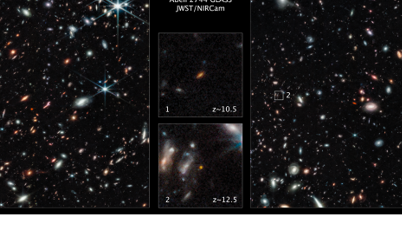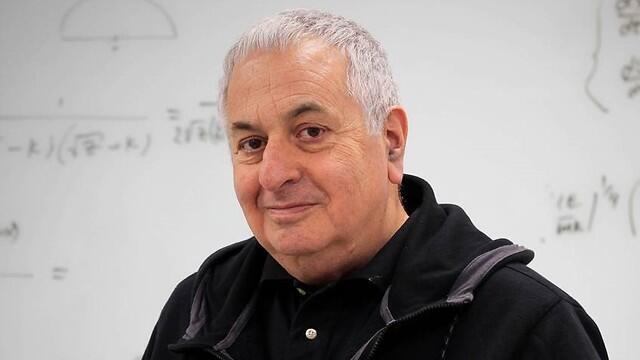Recent observations made by using the James Webb Space Telescope surprisingly have revealed an excess of massive galaxies in the universe, already appearing in the first half-billion years following the Big Bang. While these findings challenge existing understandings of the formation of early galaxies, researchers from the Hebrew University now propose a simple solution to this puzzle.
Read more:
According to the proposed model, the unique conditions that prevailed in the early galaxies, characterized by high density and low concentration of heavy elements, allowed for the efficient formation of stars without interference from other stars.
3 View gallery


The primordial galaxies as observed by the James Webb Space Telescope
(Photo: NASA, European Space Agency)
The new theoretical model, published by Professor Avishai Dekel along with his colleagues Professor Yuval Birnboim, Dr. Nir Mandelker, Dr. Kartick Sarkar, and Dr. Zhaozhou Li, all from the Racah Institute of Physics at the Hebrew University of Jerusalem, was recently accepted for publication in the journal of the Royal Astronomical Society.
"Already in the first half-billion years, we have identified galaxies, each containing about 10 billion stars, like our own sun," Dekel said. "This surprising discovery has led researchers to consider various explanations for this phenomenon, ranging from the possibility that the estimation of the number of stars in galaxies is exaggerated, to the need for critical changes in the standard cosmological model of the Big Bang."
3 View gallery


Professor Avishai Dekel of the Racah Institute of Physics at Hebrew University has suggested a solution to how early galaxies formed
(Photo: Michael Yakirevich)
According to the accepted theory of galaxy formation, supported by observations of the latest universe and computer simulations, gravitational forces cause the collapse of the dispersed gas in the universe into massive spherical clouds of dark matter, where it transforms into shining stars, like our sun. This is how galaxies were formed throughout the universe, including the Milky Way galaxy, where our solar system is located. However, the theory and observations have thus far shown that the efficiency of star formation in galaxies is low, with only about 10% of the gas flowing into clouds actually turning into stars.
"Most of the gas does not form stars because it heats up and even gets ejected outside galaxies due to winds and supernova explosions from the stars that manage to form first," Dekel explained.
If that's the case, how is it possible that there were so many stars in galaxies during the early universe?
According to researchers from the Hebrew University, the unique conditions that prevailed in the early galaxies allowed all the gas to efficiently turn into stars without disturbance from stellar winds or supernova explosions. This is because such explosions occur only two million years after the burst of star formation after massive stars deplete their core fuel (primarily hydrogen) and end their lives in explosions. When the abundance of heavy elements is low, even the pre-explosion winds allow for a similar "window of opportunity" of about two million years before they become effective.
3 View gallery


The James Webb Space Telescope has revealed an excess of massive galaxies in the universe
(Photo: NASA, European Space Agency)
"In the early stages of the universe, the star-forming clouds were denser, enabling a rapid collapse of gas within them and its transformation into stars in less than a million years, within the window of opportunity," said Dekel. "This naturally resulted in the high efficiency of star formation from the gas without disruption from explosions or winds from older stars."
The researchers demonstrate that this phenomenon occurred naturally only during the early period, less than 600 million years after the Big Bang, and was limited to galaxies with more than 10 billion solar masses. According to Dekel, each such galaxy should contain around 10 thousand clusters of a million solar masses each. The researchers refer to the proposed process as "Feedback-Free Starburst" (FFB). The new model offers clear observational predictions, which are already starting to be confirmed by new observations from space telescopes.
The findings of the research also have significant implications for the evolution of galaxies throughout all periods.
For example, the proposed scenario explains the efficient formation of intermediate-sized black holes (around a thousand solar masses) at the centers of early accumulations. These black holes can later merge and grow into supermassive black holes (up to a billion solar masses), as observed in the centers of large galaxies around half a billion years later. This scenario can also explain the mystery of the existence of supermassive black holes, which is an intriguing subject awaiting its resolution in cosmological research.
"Our intention is to examine these implications and other important consequences in future studies," concluded Dekel.

